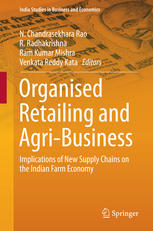

Most ebook files are in PDF format, so you can easily read them using various software such as Foxit Reader or directly on the Google Chrome browser.
Some ebook files are released by publishers in other formats such as .awz, .mobi, .epub, .fb2, etc. You may need to install specific software to read these formats on mobile/PC, such as Calibre.
Please read the tutorial at this link: https://ebookbell.com/faq
We offer FREE conversion to the popular formats you request; however, this may take some time. Therefore, right after payment, please email us, and we will try to provide the service as quickly as possible.
For some exceptional file formats or broken links (if any), please refrain from opening any disputes. Instead, email us first, and we will try to assist within a maximum of 6 hours.
EbookBell Team

4.8
34 reviewsThis book examines the performance of organized retail chains supplying the agri-input and output services in terms of achieving their objective of utilising collective bargaining power in the marketing of their agricultural produce, integrating empirical experience from India and other selected developing countries. The scenario of marketing for agricultural products has been undergoing rapid changes with the rise of organised retailing (the Indian term for ‘supermarkets’), a process that is likely to accelerate in years to come, with India being on the threshold of a supermarket revolution. In fact, India is referred to as the ‘final frontier’ in the development of supermarkets. The growth of supermarkets in India is faster than that in China, which is also witnessing an exponential growth as part of the “third wave” of supermarket diffusion.
The book investigates the links between organised retailing and farmers and farming in India. Apart from raising issues of equity, inclusion and problems in policy framework, it also discusses policy interventions that are essential in order to make the development of organised retailing more inclusive and beneficial to the farming community and agricultural sector. The book further serves as a guide for policy makers, helping them to select the right kind of interventions to balance growth with equity as market forces penetrate deeper into the agricultural marketing space.